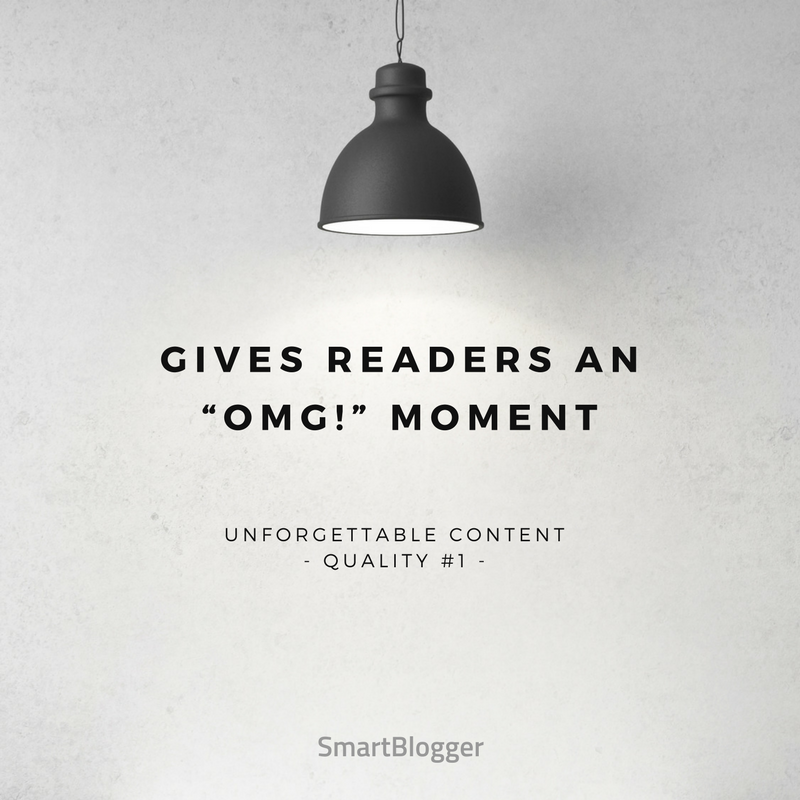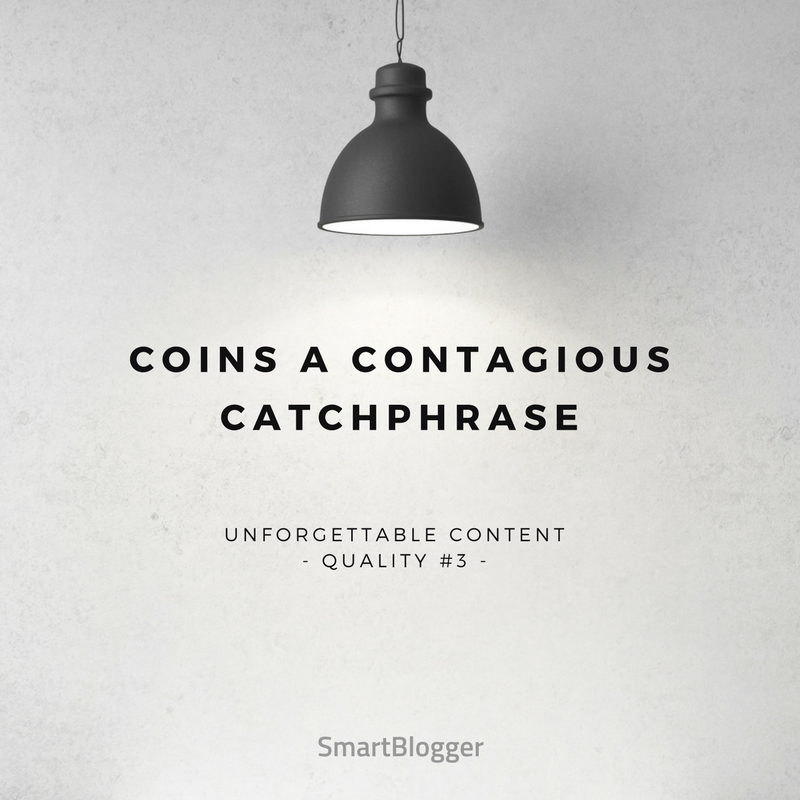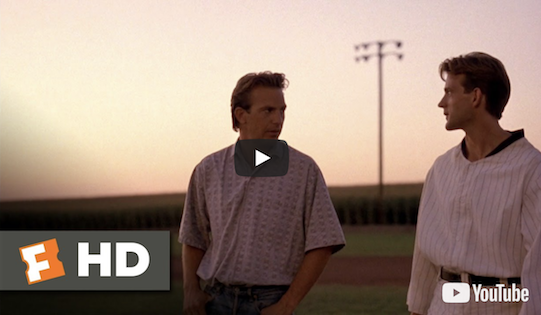“Create evergreen content that will always be relevant,” the experts say.
And so you do.
You think of an idea and spend days writing, tweaking, and perfecting every ageless, enduring syllable.
You’re certain you have a winning post on your hands — the kind of evergreen content that can stand the test of time and be spoken of with reverence years later by adoring fans who name their firstborn after you.
But inevitably, after its initial wave of popularity subsides, your masterpiece disappears into the background as newer and newer posts pop up.
Instead of standing the test of time, your timeless content is forgotten.
And the only adoring fan willing to name their firstborn after you is your spouse.
So, what the heck’s happening?
Are the experts wrong? Is evergreen content overrated?
Well, here’s the thing…
The Painful Truth: Most Content (Even Evergreen Content) Will Fade Into Obscurity Days after Clicking “Publish”
It’s sad but true.
Most content, even when it’s excellent, is quickly forgotten.
Sure, it may be popular for a little while. For a few glorious moments, it may be flush with laudatory blog comments, congratulatory emails, and social media love.
But, eventually, its popularity fizzles out.
That’s what makes the idea of “evergreen content” so appealing — it’s supposed to be immune to fickle fancies and flavors of the month.
But here’s the problem:
If your evergreen content is forgettable, being “timeless” is pretty pointless.Click To TweetYour content could be relevant and evergreen until the end of time. But if it’s bland, it won’t matter. If it’s boring, no one will care. If it’s forgettable, its timelessness is wasted.
The experts’ advice isn’t wrong — it’s just incomplete.
Because to truly stand the test of time, evergreen content can’t simply be timeless. It needs to be memorable too.
So, here’s what we’re going to do:
- We’ll (slightly) tweak the definition for evergreen content;
- Go over the five crucial qualities of unforgettable posts (so your evergreen content has a chance to actually be remembered);
- Look at the ins and outs of evergreen content, including real-world examples, ideas to help you come up with your own evergreen content, and tips for making your content as good as possible.
Sound good? Let’s dive in.
What is Evergreen Content?
Evergreen content is timeless, always-relevant content that doesn’t have an expiration date. Like the evergreen trees from which it gets its name, evergreen content never looks like it’s out of season.
That’s a solid, accurate definition for how most people view evergreen content.
But we can do better:
What is Evergreen Content 2.0?
Evergreen content is timeless, always-relevant content that doesn’t have an expiration date. It’s fresh, applicable, and remembered by its readers long after it’s been published.
Timeless? Relevant? Fresh? Applicable? Those are easy.
Write a how-to article for cooking Ramen noodles and you’ve accomplished all four.
But to be remembered? To create something people don’t forget? That’s difficult.
With two million new blog posts published each and every day, getting your posts to stick in the minds of your readers is a Herculean task.
But it is possible.
If you want to create high-quality content people might remember and reference for years — not just days — after you click publish, you need to give it one (or more) of these five qualities:
The 5 Qualities of Unforgettable Evergreen Content
- Gives Readers an “OMG!” Moment
- Overwhelms the Senses (Including Taste Buds)
- Coins a Contagious Catchphrase
- Strips You Down and Lays You Bare
- Breaks Your Reader’s Lenses
Let’s break down each one.
1. Gives Readers an “OMG!” Moment
Do you remember the end of Se7en when the villain’s master plan was revealed?
Remember when your mouth dropped open after Darth Vader made the shocking (and often misquoted) revelation that he was Luke’s father?
Remember how stunned you were at the end of The Sixth Sense when you learned Bruce Willis’s character had been wearing a toupee the entire time?
These movies caught us off guard, jolted us to attention, and got us talking.
And years later, we’re still talking about them.
Why is that?
They’re quality movies for sure, but there’s more to it.
As Chip and Dan Heath discuss in their book Made to Stick (affiliate link), our brains filter out consistency in favor of focusing on differences.
So instead of remembering by-the-numbers movies that end exactly how we expected, we remember the ones with unexpected twists and surprising revelations.
Those are the stories that stand out, stick in our minds, and get us talking about them.
If you want your content to be remembered, try surprising your reader.
It’s a tried-and-true method for crafting content that sticks.

How It’s Done
Have you ever come across a headline that stopped you in your tracks?
Why James Chartrand Wears Women’s Underpants is such a headline. It’s surprising, different, and catches you off guard.
But it’s nothing compared to the surprises inside the post.
The first revelation is James Chartrand is actually a woman; however, the big discovery is why she took and continues to prominently use “James Chartrand” as her pen name.
She explains how a simple name change was able to take her from a struggling freelancer to a well-known blogger.
While the result was unintentional, she reaped many benefits from taking on a male persona — an easier time getting writing jobs, more respect for her work, and more recognition.
Undeniably, the post is brilliantly written. That makes it great.
But it’s the surprise factor that makes James’s post so gosh-darn memorable.
How You Can Do It
Creating surprising content is not an easy task, and it requires a well-thought-out idea to achieve it. But here are three ways you can get it done:
#1: Drop a Bombshell
Do you have a secret your readers would find surprising?
You’re a travel blogger who’s never flown on a plane? Do you blog about healthy eating but stuff your face with cake on a weekly basis? Did you once wear an orange tuxedo to a charity gala for the preservation of the endangered Icelandic snow owl?
Tell your readers. Give them your reasons. Get them talking.
#2: Leave Questions Unanswered
While she makes mention of her decision to keep the name in the context of feminism, James doesn’t delve too deeply into the morality of what she is talking about.
She instead leaves it to the audience to ponder — to wonder if they, too, have a bias against women in the workforce. To wonder if they have been the target of this kind of sexism before.
There are lots of questions left by this post that make it an easy one to stew over and discuss with friends and colleagues.
A memorable post will leave your reader with questions to ponder long after they’ve finished reading.
#3: Break the Norm
Let’s be honest…
Most tips, advice, and strategies you find online — regardless of the niche — are unoriginal. You’ve seen them before, and so have your readers.
Want to surprise your audience?
Offer them unconventional advice they haven’t heard a thousand times before. Give them a truly new idea or insight. Provide a simpler technique or shortcut that makes them cry over all the time and effort they wasted doing things the hard way.
A surprising revelation doesn’t have to be extraordinary or outlandish for people to remember it.
Sometimes, it just needs to thwart your reader’s expectations.
Tweetable Takeaway
Want a proven method for crafting content that sticks in your readers’ heads? Surprise them.Click To Tweet2. Overwhelms the Senses (Including Taste Buds)
Adding sensory details is a ridiculously-effective way to make your content memorable. It’s so effective, we decided to write the definitive guide on the topic.
Here’s an excerpt:
Remember the final scene in Field of Dreams when Ray Kinsella has a catch with his dad?
You can smell the grass on the field.
You can hear the sound of the baseball hitting their gloves.
And you can feel Ray’s years of guilt melting away as he closes his eyes, smiles, and tosses the ball back to his dad.
(Be honest. You’re crying right now, aren’t you?)
Field of Dreams made you feel like you were in Ray’s shoes, on his field, playing catch with dad.
The scene creates such a vivid experience for many viewers that whenever they think of playing catch, this scene will come up alongside their own childhood memories.
Here’s why:
When you paint a strong scene in your audience’s mind, you make it easier for them to pull it back up from their memory. You’ve essentially bookmarked it for them so they can easily find it when something — a sight, a smell, a sound — reminds them of it.
That’s the power of content that incorporates sensory details.
583 Sensory Words to Take Your Writing from Bland to BrilliantBy using descriptive details to evoke sight, sound, touch, taste, and smell; you can make your content burst to life in your readers’ minds.
This will help your content connect with readers on a personal level, which will help them remember it long after other posts have gone the way of the dodo.
How It’s Done
Few writers are better at descriptive details than Jon Morrow.
In his post 7 Lessons from a Guy Who Can’t Move Anything But His Face, he uses storytelling and descriptive language to help the reader get an idea of what it might feel like to be him; specifically, what it’s like to live with a disability.
Jon’s words help you feel what it’s like to only be able to move your eyes and lips. He helps you feel what it’s like to spend years of your life in hospitals. He helps you feel what it’s like to overcome all of it to live an amazing, blessed life.
Had he simply told his readers facts, the points in Jon’s post wouldn’t have resonated the same way.
Instead, he took them on an emotional journey. The ups, the downs, and everywhere in between.
And they remember him because of it.
How You Can Do It
When writing, use descriptive details to guide your readers’ imaginations.
This can be accomplished through storytelling (when appropriate) and words that convey sensations (i.e. sensory words).
Not sure where to begin? Read these two posts:
- The Blogger’s Guide to Telling Stories That Win Hearts and Minds
- 583 Sensory Words to Take Your Writing from Bland to Brilliant
These posts will teach you the art of storytelling and everything you can possibly need to know about sensory words.
Master these and everything you write will be drenched in descriptive details.
Which means (almost) everything you write will be memorable.
Tweetable Takeaway
Make readers see what you see. Put them in your shoes and take them on an emotional journey.Click To Tweet3. Coins a Contagious Catchphrase
“The quicker picker upper.”
“The ultimate driving machine.”
“Melts in your mouth, not in your hands.”
Unless you’re one of the precious few whose brains haven’t been inundated with advertisements over the years, you probably recognize these slogans. You also probably recognize the companies that created them.
That’s what a great slogan, phrase, or title can do.
They’re memorable. They differentiate the brand. They often outline a key benefit.
If you want your evergreen content to have a chance to stay relevant for years to come, present something that’s novel and — this is key — condense it to its essence.
The end result will be a phrase or idea people will immediately associate with your content.

How It’s Done
The post 1,000 True Fans by Kevin Kelly created an idea that was short and sweet: you can make a living doing anything if you have just 1,000 true fans.
He defined this simple, brilliant idea and then spent the rest of his post explaining why it worked and what you had to do to make it work.
Written in 2008, Kevin’s post is still remembered and referenced all these years later.
Why?
Because the phrase “1,000 true fans” condenses its concept into a simple, catchy phrase. And that makes it easier for people to remember and repeat in conversation.
Brian Dean does something similar in his post The Skyscraper Technique, which teaches a useful link-building strategy.
After naming his technique, Brian breaks it down into easy-to-follow steps so his audience can quickly get what they need from his post.
The technique is fairly simple and its title, again, is quite catchy.
You can grasp the concept of Brian’s idea simply by its name. You can visualize it. And you can close your eyes and see it in action.
That helps make it memorable.
How You Can Do It
Ask yourself a few questions…
What is your post about? Can you boil your main idea down into a memorable phrase or title? Does it present a unique perspective or technique? Does it address a real need or concern many people can connect with?
Your phrase should be simple and leave an impression on your audience, whether that’s giving them an “aha” moment or simply piquing their interest so they’ll be curious to hear what you have to say.
And once you have settled on a memorable phrase or title, feature it prominently. Include it in your headline. Repeat it, as needed, throughout your post.
Tweetable Takeaway
Create something useful and your audience will read it. Make it catchy, and they'll remember it.Click To Tweet4. Strips You Down and Lays You Bare
If you really want to write a post that resonates with people, you need to connect with them on a deep, personal level. You need to strip your defenses and show your vulnerable side.
This not only sets you apart from all the regular, straight-laced content your audience is exposed to, it helps you relate to them in a way that’s meaningful.
Why do you think Taylor Swift is so popular?
It’s not because she has a better voice than everyone else. It’s not because she’s seven feet tall. And it’s not even because she frequently posts pictures of her cats on Twitter and Instagram.
It’s because her lyrics connect with her audience.
From teardrops getting on her guitar to shaking off the fact that haters insist on hating, Taylor often shows vulnerability in her songs.
This vulnerability endears her to her fans. When they look at her, they see a seven-foot-tall version of themselves. They see a kindred spirit.
And you don’t forget kindred spirits very easily.

How It’s Done
Jon is masterful at showing vulnerability.
In his post On Dying, Mothers, and Fighting for Your Ideas, Jon recounts the story of his mother’s tenacity in the face of his condition, which his doctor labels terminal.
He does this beautifully by telling the story first from his mother’s perspective, then from his own, and — lastly — he ties it into his main point: writers have to fight for their ideas with all the determination and love with which mothers fight for their children.
Such an appeal to the audience’s emotions is powerful. It hits home. It’s memorable.
If you want to make your content memorable, make it personal.
How You Can Do It
There are many, many ways you can show vulnerability in your writing. Here are a few ideas:
#1: Open a Window into Your Life
Like Jon does in many of his posts, you can draw your audience in with a personal story.
This works especially well if it exposes you in some way to the reader or helps them relate to you. When you write, you’re asking your audience to trust you with their time and attention.
Show them why they should feel comfortable trusting you.
#2: Reveal Your Intentions
Do you have personal reasons for writing your post?
Be candid with your audience and tell them why the subject means so much to you.
It’s easy for your audience to see you as just another faceless entity trying to sell them a product or idea.
Break this image by showing them your human side.
#3: Expose Your Fears and Anxieties
Are you writing about a problem or worry your audience has?
Do you share and understand their anxieties?
Let your readers know you are (or have been) in the same boat they are and show them how that makes you more qualified to write about it.
Tweetable Takeaway
Don’t be a superhero. Pull back the curtain and let readers see your struggles.Click To Tweet5. Breaks Your Reader’s Lenses
We all view the world through lenses.
These lenses shape our thoughts, our passions, and our beliefs on everything from political issues (“Vote Ron Swanson”) to music (“500 Miles by The Proclaimers is the greatest song of all time”) to the cinema (“Kevin Costner should be in every movie”).
But what if one of the things you’ve believed all your life was turned on its head?
If you want to write content that people will remember in five years, you can’t just give readers random facts.
Hold up a mirror so your readers take cold, hard looks at themselves.
Challenge something your readers hold dear.
Try to change their worldview.

How It’s Done
Few concepts are as ingrained into the American way of life as the eight-hour workday.
That’s why Leo Widrich’s The Origin of the 8-Hour Work Day and Why We Should Rethink It, which attempts to debunk the eight-hour day by showing how it wasn’t a well-thought-out or highly-optimized number, is so intriguing.
Leo doesn’t offer the reader a new number as an alternative. Instead, he says what his reader should be concentrating on is focus; specifically, how well they are able to focus on the task at hand regardless of how much time they have to complete it.
Another way to change worldviews is to expose your readers to the reasons why they hold the beliefs they do. A great example of this is the post Taming the Mammoth: Why You Should Stop Caring What Other People Think.
Written by Tim Urban, this humorous piece takes the audience through a history lesson that tells them why they care so much what people think, and then guides them on how to overcome this crippling fear.
We’re constantly trying to overcome the fear of rejection and embarrassment, so a post telling us why we (foolishly) fear such things definitely hits home.
How You Can Do It
Challenging people’s views in a professional, non-confrontational way isn’t easy, but here are a few ideas to help you do it.
#1: Demolish Beliefs That Lead Them Astray
Look at the commonly held beliefs of your readers and see if you find any of them to be faulty.
Ask yourself questions like:
- “What do my readers believe about X that’s untrue?”
- “What often-repeated tips and strategies in my niche are — how to put this delicately… — extremely stupid?”
- “Are there any beliefs keeping my readers from achieving X result?”
Once you’ve found something faulty, write about it.
That’s what Derek Halpern did when he tackled the “Content Is King” mantra.
It’s what Dries Cronje did when he told bloggers that posting every day was a silly strategy.
And it’s what Jon did when he pointed out the old way of starting a blog is inefficient and a waste of time (and money).
Demolishing your reader’s beliefs in a direct, honest, and non-condescending way is an effective strategy for creating memorable content.
#2: Put Your Readers in Someone Else’s Shoes
A great way to get into your readers’ heads and change their perspective is to present them with a story — whether it’s a real one or a metaphor — and challenge them to ask, “How would I feel if … ?” or “What would I do if … ?”
Just think about your favorite books.
The best are ones where we put ourselves into the shoes of the characters. You’re not reading The Three Musketeers, you are The Three Musketeers.
It’s you fighting with swords, having swashbuckling adventures, and eating delicious candy bars with chocolate-covered fluffy centers.
And once you’re in their shoes, you can more easily see things from their point of view. Suddenly, you’re not viewing the world through your lens. You’re viewing the world through theirs.
That’s what a great story can do. It draws you in. It flips the “sympathize” switch and turns it to “empathize.”
Flip that switch in your reader and it becomes that much easier to flip their perspective.
Tweetable Takeaway
Want to write something people will remember? Turn a commonly-held belief on its head.Click To TweetCongratulations! You now know the five crucial qualities for crafting content that’s unforgettable (as well as the updated evergreen content definition we discussed at the beginning of the post).
You could stop reading right now and create some pretty remarkable content.
But if you’d like to learn more, we’re not finished just yet.
Let’s roll up our sleeves and tackle the nitty-gritty details of evergreen pieces of content:
The Ins and Outs of Evergreen Content
- Just Because It’s Evergreen Content Doesn’t Mean You Should Never Update it
- Real-World Examples of Evergreen Content
- What Evergreen Content is NOT
- Evergreen Content Ideas
1. Just Because It’s Evergreen Content Doesn’t Mean You Should Never Update it
There’s a misconception evergreen content never needs to be updated — that you write it, click “Publish”, and then never touch it ever again.
And sure, you can do that, if you like. If it’s a piece of truly evergreen content, it’s going to remain relevant whether you touch it or not.
Does it need to be updated? No. Should it be updated from time to time? Yes.
And these updates should include:
- Keyword research to compare it to new content that’s been published;
- Making sure the post still fits into your content marketing strategy (and if it doesn’t, modifying it);
- Optimizing the piece of content for SEO so Google, Bing, and other search engines will rank it high in SERPs;
- Adding FAQ sections, infographics, and the like so your evergreen post gives readers more value;
In short, all content that brings traffic to your blog should be polished from time to time and given a new coat of paint.
Evergreen content is no exception.
2. Real-World Examples of Evergreen Content
Sometimes, the best way to explain something is to show examples.
Let’s look at a handful of evergreen articles you can use as inspiration.
Note: Though these examples are evergreen, they may or may not possess any of the five qualities we discussed earlier. Keep that in mind when browsing.
It’s hard to get more timeless than a recipe. This how-to article will outlive all of us.
Content related to words, grammar, writing, etc. rarely goes out of date.
Are all quotes evergreen? No. Many an expert preached the virtues of MySpace back in the day, for example.
But inspirational quotes, uplifting quotes, etc. tend to age like fine wine.
Personal stories never age. Even if details within them are from a bygone era, the stories themselves (and the lessons they teach) are evergreen.
Articles on parenting, the human psyche, character traits, and similar topics tend to remain relevant for a long time.
The above isn’t a definitive list, but it’s a good starting point. And hopefully, you’ll see a few common themes.
Such as…
3. What Evergreen Content is NOT
Evergreen content can be a lot of things, but it can’t be:
- Trendy — trends come and go, and so does trending content
- Topical — today’s breaking news article is tomorrow’s yesterday’s news
- Related to pop culture — reminder: “dabbing” and “planking” both used to be things
- Political (like Presidential elections) — the thing that outraged you today will be replaced by something new next week
- Holiday themed — if it’s only relevant once a year, it’s not an evergreen topic
- Related to technology — the latest gadget will be old news by the time you finish this post
In short, if it’s on a topic with a short-term lifespan, it can’t be evergreen.
4. Evergreen Content Ideas
Not sure what type of content to create? Here are several evergreen content ideas to get you started:
- How-to Posts. Whether it’s showing someone how to cook a recipe or a beginner’s guide for building a treehouse, how-to posts are evergreen go-tos.
- Ultimate Guides. You’ll need to keep them up to date to fend off competitors, but ultimate guides for non-trendy topics are evergreen gold.
- Inspirational Articles. If it inspires readers, compels them to take action and improve their lives, it’s a great evergreen candidate.
- Timeless Quotes. As discussed previously, quotes on tried-and-true topics have long lifespans.
- Case Studies. In addition to showing your expertise (and potentially winning you new clients or subscribers), case studies are usually timeless. They also tend to earn backlinks from other websites, which will help you rank higher in Google searches. They’re a good fit for any content strategy.
- Tools and Resources. Roundup posts that provide the reader a definitive list of sources are excellent examples of evergreen content. You’ll need to ensure their content stays up to date (since tools/resources come and go), but it’s worth the investment in time.
It’s Time to Craft Everlasting Gobstoppers of Evergreen Content
With dreams of fame, fortune, and world domination dancing through their heads, ambitious bloggers pour their hearts and souls into creating evergreen content they hope people will remember forever.
Unfortunately, most bloggers don’t know how to create content readers will remember after their cup of morning coffee, much less remember for years and years.
But you do.
You now understand the five crucial qualities content needs to be memorable. And you know what it takes to make evergreen content truly “evergreen.”
The days of being dumbfounded as you watch your latest blogging masterpiece fade into the sunset are over.
Are you ready to create evergreen content people will still talk about in five years?
Then what are you waiting for?
Let’s do this thing.
The post Evergreen Content (That People Will Actually Remember) appeared first on Smart Blogger.
from
https://smartblogger.com/evergreen-content/

No comments:
Post a Comment